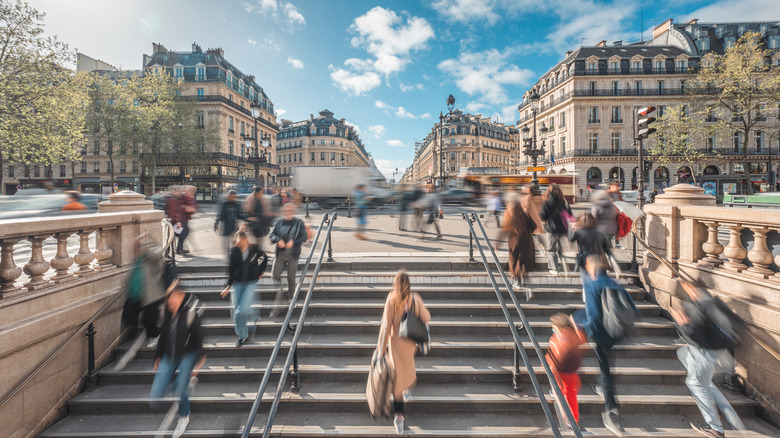Fast Vs Slow Travel: Which Trip Style Is Right For You And Your Destination?
There is no such thing as a perfect itinerary. What is an optimal pace of travel for one, may be torture for another. For example, a traveler comes back home raving about an exhilarating 14-day itinerary that hits all the must-visit destinations in Ireland. Another traveler waxes poetic about the two weeks spent one single area of the country, soaking up the local atmosphere in one of the most scenic vacation spots in the world. Who is right? It all depends upon the traveler.
The very same person that loved life as a slow traveler on one trip, can then thrive in a fast itinerary on the next journey, depending on the destination. Foregoing any judgment or influence on what is a "better" way to travel, look instead at the factors that best suit you at the time and for the particular voyage.The decision of the pace of travel doesn't have to be an all-or-nothing option — think of it as the "foxtrot" of travel: slow-slow, quick-quick. When choosing a trip style, it is worth considering a hybrid approach that fits your likes, but also conforms to your very real constraints.
The case for slow travel
Slow travel is on the rise, focusing on depth over breadth and absorbing local color over ticking places off the list. Traveling at a more mindful pace and keeping the itinerary loose is not new. An Ipsos survey last year showed that 69% of American travelers aimed to incorporate this trend into their future travels in some way. Slow travel allows you to immerse yourself in one place and gain a better understanding of local life. You'll make deeper connections with the people and places you visit.
Dialing down the pace could even be good for the brain. A study on slow travel at sea commissioned by Cunard Line, a luxury cruise operator, found that after five days respondents displayed improved cognitive abilities, such as memory, logical reasoning, perceptual abilities, and problem-solving. Slow travel is also associated with sustainability, which remains important for many travelers. A 2025 Booking.com report found that more than half of travelers are now conscious of tourism's impact on local communities and the environment. By cutting down on the number of destinations you try to hit in one trip, you can reduce your carbon footprint.
Something to keep in mind is that recent research tends to be focused on slow tourism, which could somewhat skew our understanding of real-world choices when it comes to slow vs. fast travel. With so many variables at stake, travellers can feel pressured to choose a pace that is not really an optimal fit for their personality, itinerary, or budget.
The case for fast travel
The choice of when and how to travel, alas, is often dictated by less romantic notions such as calendars and wallets. It's challenging for anyone who wants to see as much of the world as possible with a full-time job and only two or three weeks of vacation a year. For people who want to maximize their vacation days, fast travel is the best way to see a lot in small amount of time.
Fast travel shines in well-connected destinations with reliable infrastructure and landmarks that you can cover in rapid-fire succession. This may include tried-and-tested cities like London, Paris, and Barcelona, for example. Don't automatically discount so-called tourist traps because some of the most visited spots are in that league for a reason. Jam-packing the calendar may also be a good option for solo travelers who need to stay on a budget, staying nimble to make the most of the time and funds available. Finally, fast travel doesn't have to necessarily be synonymous with a larger carbon footprint or environmental impact. For example, some airlines offer stopover programs giving you a layover in an intermediate destination without extra costs or additional emissions. Country-hopping via train is also more environmentally-friendly than driving or flying.
To strike a balance, you could start your itinerary with a rapid blitz of Paris, then transition to a hiking route in the Alps where you hit three different European countries (what could be slower than walking?), ending with a quick exploration of the city where you catch your leg home. If you listen to your personal values and cultural curiosity, and exercise a healthy dose of skepticism on peer influence, you may just end up with the best of both worlds.


